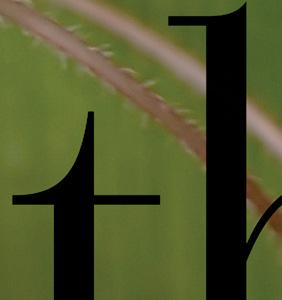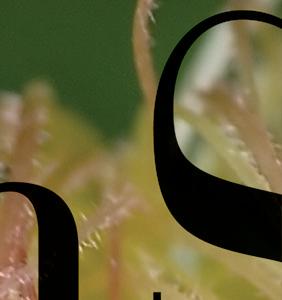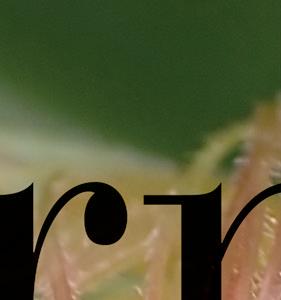Management Practices













ONE GROWER PUBLISHING, LLC
2023 A
March
Supplement to Cotton Farming and The Peanut Grower Magazines Southern Production & Marketing Strategies
Editor
Farm meetings and short courses dot the calendar all around the Southeast December through March. Looking ahead to pests and diseases farmers will face is one thing but trying to determine what the economy and markets will do is another.
A er a year of economic shocks that included supply chain disruption, global con ict, tight margins and historic in ation, Purdue University agriculture economists are looking ahead to what the ag sector can expect.
“Signs are pointing to another uncertain and volatile year in agriculture,” says Roman Keeney in the most recent Purdue University Agricultural Economics Report. “In 2023, our experts are assessing the possibility of a recession, impacts from the ongoing war between Russia and Ukraine, as well as expectations for input costs and food prices.

“ e 2018 Farm Bill is set to expire in September, which makes 2023 an important year for farm policy. Following multiple years of emergency support and agriculture bene ing from COVID relief packages, direct government support to agriculture is set to fall dramatically,” says Keeney, who is an associate professor at Perdue.

As he says in the report, the short timeline and a wave of new congressional representatives could make replacing the 2018 Farm Bill in 2023 a signi cant challenge.
As for crops, according to the report, despite substantially higher production costs, it is not out of the realm of possibility to see positive margins in 2023.
Michael Langemeier, Perdue professor of agricultural economics, says, “ e higher cost structure, along with relatively tight margins, increases the importance of carefully scrutinizing input and crop decisions. Producers are encouraged to create crop budgets and generally improve their record keeping.”
Collect Quality Planting Data
Planting data can provide valuable insights into planter performance and serve as an important data layer for crop management during the season. Here are few considerations to avoid common errors and ensure quality data collection during planting:
Planter Con guration and Section Control: To collect and map accurate data while planting, proper planter con guration, including the length and width of the planting equipment, total number of rows and row width in the seed monitor, is critical. If section or individual row-control capabilities are present, verify the number of sections and width of each section are entered correctly and auto section/row control is enabled. is should be part of pre-plant technology inspection and can easily be done before ge ing in the eld.
GPS Accuracy and O sets: Planting data is spatially mapped using real-time GPS in the eld; therefore, setup and accuracy plays a big part in how accurately the planting data is displayed and recorded. Similarly, GPS o sets, including exact location of the GPS on the tractor and from the planter, should be entered correctly to prevent errors such as data logging out of the eld boundary, unnecessary overlap or skips between passes.
Calibration: Planted population is measured using a seed sensor installed on the seed tube. Seed sensor malfunction is somewhat common and will provide inaccurate readings. Hydraulic-driven planters also require a correct gear ratio to be entered into the planter display to control and achieve target seeding rate.
Most modern planting systems have an option to perform a static calibration test to check the accuracy of seed metering for the whole planter and even individual row units in some cases. is step helps verify that the correct crop kit and seed disc is installed and is functioning properly. If you are using the planter display to meter and place other inputs, make sure to calibrate and verify the accuracy of those systems.
Field Names and Jobs: One of the most common issues is data from multiple elds being together in a single job or under the same eld name. is makes it harder to visualize data for each eld separately and o en requires some sort of post-processing to split and assign data to individual elds. Name each eld distinctly, and start and end the planting job within that eld to keep data clean and organized. is is important when planting multiple varieties and/or seeding rates across the farm, as being able to track planting metrics is one of the bene ts of planting data.
Planting Prescriptions: For planting prescriptions that automatically vary seeding rates within the eld, proper equipment setup along with GPS o sets (as mentioned above) are crucial. When loading prescription maps, make sure it’s in the correct le format and the appropriate rate column (with right units) is selected in the planter display to read the planting prescription correctly. Appropriate look-ahead distance, based on the planting speed and size of the seeding rate zones, should also be checked for the planter to transition smoothly between prescribed rates.
Data Transfer: Good quality data also means successful transfer into management so ware or an application. If enabled and active, most new planters wirelessly transfer data into their own management soware, whether available as an online web or desktop application. If this functionality is not present or enabled, data should be transferred using an external storage device from the seed monitor to a computer. While the speci c timeline for transferring this data depends on what and how it will be used, generally it’s the sooner the be er.
Planting data can be useful for evaluating planter performance and assessing crop stand in the eld. e quality of planting data is important, especially when making management decisions based on this data. CS
Corn South: Covering Southern Corn Production
CornSouth is a supplement to the Mid-South and Southeast versions of Cotton Farming magazine and to The Peanut Grower magazine for producers in Florida, Georgia, Alabama and Mississippi. To receive CornSouth, visit www.CornSouth.com and click on “Subscribe to CornSouth.”
2 CORN SOUTH MARCH 2023 CORNSOUTH.COM
2023 Economic
Report
Data Management
Amanda Huber
Article by University of Georgia Precision Ag Specialist Simer Virk.
ON THE COVER: Photo by Ctpaul/Dreamstime.com
IF THERE’S A BETTER WAY, HE’LL FIND IT.


















































Every growing season has its challenges. Weather. Weed resistance. Razor-thin margins. So you keep an open mind and look for new ways to tackle the problem — new products, new techniques, new ideas. At UPL, we’re opening new doors to productivity with products designed to help you do more with less. Our portfolio for corn features tried-and-true herbicides like INTERLINE® and MOCCASIN® II PLUS, economical fungicides like ZOLERA® FX, in-furrow solutions like TEPERA® PLUS HD, insecticides and more. And because we’re a global manufacturer — not just a supplier — our product formulations and dependable supply chain are second to none.









UPLCORNPORTFOLIO.COM SMART SOLUTIONS FROM PREPLANT TO POSTHARVEST.














Always read and follow label directions. UPL, the UPL logo and OpenAg are trademarks of a UPL Corporation Limited Group Company. ©2023 UPL Corporation Limited Group Company. CRNRC-2201
Know The Difference Between Common And Southern Rust
Distinguishing between common and southern rust is important for proper corn management. Rusts are fungal diseases that a ect a wide range of crops worldwide. In the southern United States, two rusts, common rust (Puccinia sorghi) and southern rust (Puccinia polysora), are known to a ect corn. Although both diseases can cause yield reductions, common rust is much less aggressive and must be present at high levels to cause a yield loss. Southern rust can lead to dramatic yield reductions if present at critical growth stages due to a loss in the photosynthetic capacity of the leaves.
Symptoms and Signs
Both common and southern rust begin as small lesions on the leaves that develop a pale green to yellow halo. As these lesions mature, the fungi erupt through the epidermal tissue to form raised spore-producing structures called pustules, which produce reddish or rust colored spores.
Common rust pustules are typically brown to red in color, elongated in shape and appear on the upper and lower leaf surfaces. Southern rust pustules are orange to tan in color, with pustules having a circular to oval appearance and are typically only present on the upper leaf surface. In severe cases, southern rust pustules can also be found infecting husks and the leaf tissue that wraps around stalks in addition to leaves.
In South Carolina, common rust infection typically occurs prior to tasseling because of cool and moist environmental conditions favoring disease development, with optimum temperature ranging from 61 to 77 degrees Fahrenheit. Hot, dry conditions can limit common rust development, resulting in pustules becoming inactive.

In contrast, southern rust typically occurs later in the growing season a er tasseling, when temperatures reach 77 to 82 degrees and high relative humidity is present. Both diseases can infect the host plant a er approximately six hours of leaf wetness, typically a heavy dew. However, periods of frequent rainfall can promote severe disease development, especially southern rust.


Disease Cycle
Rusts require living host tissue to survive and complete their life cycle. In South Carolina, these hosts produce limited amounts of primary inoculum the following spring. Each year, wind currents from tropical climates deliver common and southern rust spores into corn-producing regions of the United States. Once the corn plant is infected, these pathogens can develop spore-producing pustules in seven to 14 days, which can lead to secondary infections.
Management
Typically, common rust has a limited impact on yield, with normal levels of common rust not requiring fungicide sprays. Resistant hybrids are available and provide good control for no added expense. In cases where large amounts of inoculum are present and environmental conditions are favorable, fungicides may be necessary to achieve e ective control.

Management of southern rust begins with planting a resistant hybrid and being prepared to apply a fungicide if needed. Scouting to detect
infection early in the growing season is essential.
Fungicide applications should be applied at or around the tasseling or silking growth stage, or VT/R1, as a preventative spray.
Using tools such as the corn integrated pest management website, corn.ipmpipe.org/southerncornrust, which tracks southern rust observations throughout the growing season, can be helpful in making informed management decisions. For a complete list of suggested fungicides to control foliar diseases on corn, review the Crop Protection Network’s Fungicide E cacy for Control of Corn Diseases.
Growers should be careful when utilizing any fungicide to be aware of the mode of action. Fungicides with multiple MOAs are o en more e ective in providing disease control and help with fungicide resistance management but can also be more expensive. CS
4 CORN SOUTH | MARCH 2023 CORNSOUTH.COM Disease Management
Article by Benne Harrelson, Michael Plumblee and John Mueller, Clemson Cooperative Extension.
Common Rust
Southern Rust
DAREN MUELLER, IOWA STATE UNIVERSITY, BUGWOOD.ORG TRAVIS FASKE, UNIVERSITY OF ARKANSAS, DIVISION OF AGRICULTURE, BUGWOOD.ORG



















































































